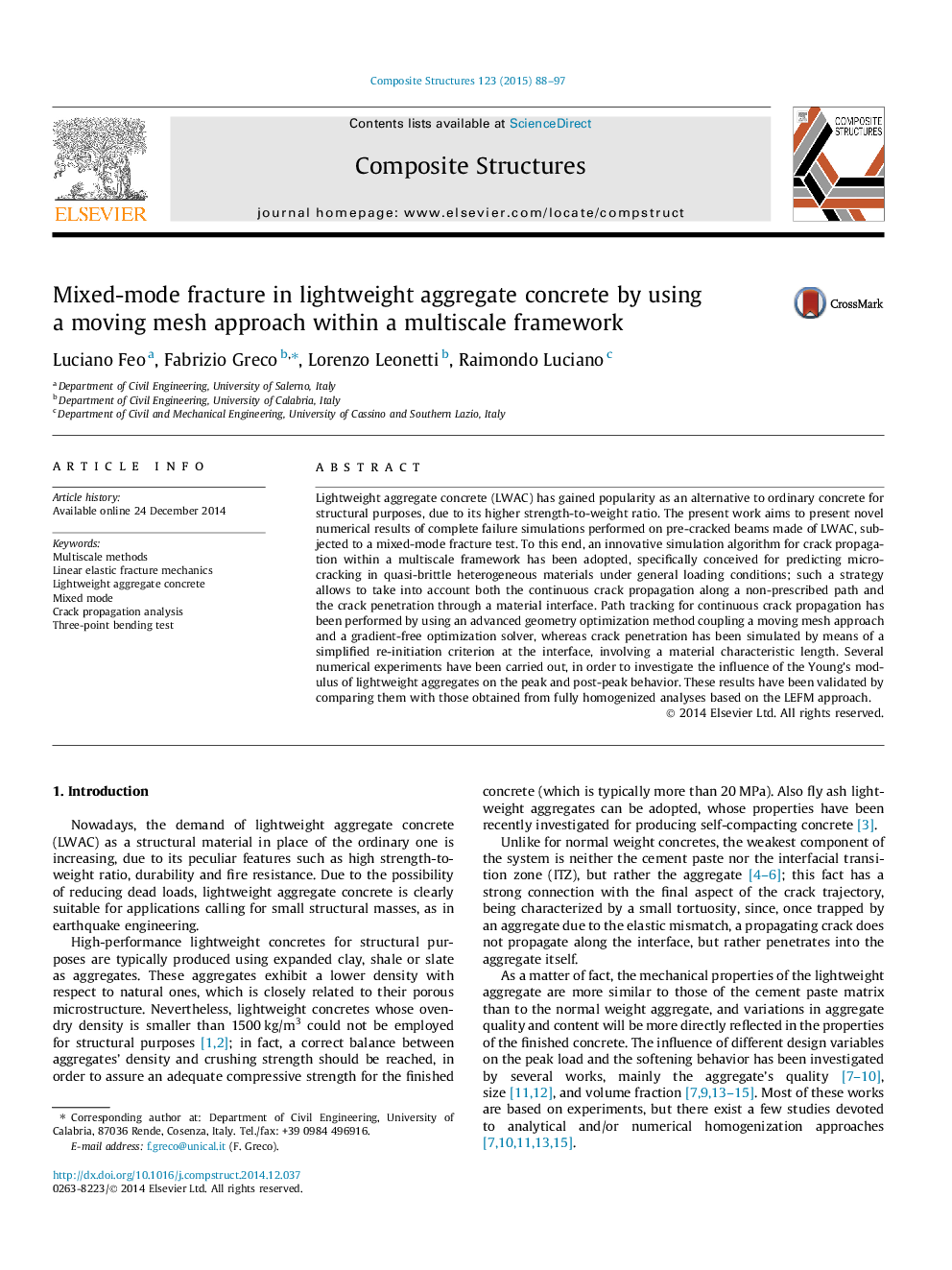| Article ID | Journal | Published Year | Pages | File Type |
|---|---|---|---|---|
| 6706994 | Composite Structures | 2015 | 10 Pages |
Abstract
Lightweight aggregate concrete (LWAC) has gained popularity as an alternative to ordinary concrete for structural purposes, due to its higher strength-to-weight ratio. The present work aims to present novel numerical results of complete failure simulations performed on pre-cracked beams made of LWAC, subjected to a mixed-mode fracture test. To this end, an innovative simulation algorithm for crack propagation within a multiscale framework has been adopted, specifically conceived for predicting micro-cracking in quasi-brittle heterogeneous materials under general loading conditions; such a strategy allows to take into account both the continuous crack propagation along a non-prescribed path and the crack penetration through a material interface. Path tracking for continuous crack propagation has been performed by using an advanced geometry optimization method coupling a moving mesh approach and a gradient-free optimization solver, whereas crack penetration has been simulated by means of a simplified re-initiation criterion at the interface, involving a material characteristic length. Several numerical experiments have been carried out, in order to investigate the influence of the Young's modulus of lightweight aggregates on the peak and post-peak behavior. These results have been validated by comparing them with those obtained from fully homogenized analyses based on the LEFM approach.
Keywords
Related Topics
Physical Sciences and Engineering
Engineering
Civil and Structural Engineering
Authors
Luciano Feo, Fabrizio Greco, Lorenzo Leonetti, Raimondo Luciano,
